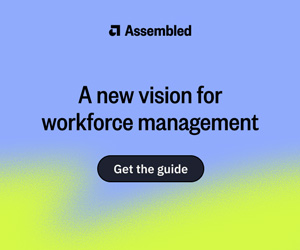Abby Monaco at NICE outlines how and why to protect vulnerable customers.
There’s no question that the COVID-19 pandemic has been harder on some segments of the population than others, and researchers have documented a huge spike in vulnerable customers as a result. In fact, one study found that fully 53% of adults display some characteristic of vulnerability, in large part due to layoffs, reduced hours at work or low financial resilience.
In the UK, the Financial Conduct Authority (FCA) has released a set of guidelines designed to help organizations treat vulnerable customers fairly. The FCA sees vulnerability as a spectrum of risk; while everyone is at risk of being vulnerable, certain characteristics increase this risk, including:
- Cognitive impairment.
- Life events such as new care-giving responsibilities.
- Low resilience to cope with financial or emotional shocks.
- Low capability, such as low literacy levels.
The guidance calls on organizations to help protect vulnerable customers by:
- Understanding the needs of their target market/customer base.
- Ensuring that employees have the right skills and capability to recognize and respond to the needs of vulnerable customers.
- Responding to customer needs throughout product design, flexible customer service provision and communications.
- Monitoring and assessing whether they are meeting and responding to the needs of customers with characteristics of vulnerability—and making improvements when needed.
Treating vulnerable customers fairly is more than a moral imperative: Businesses that fail to demonstrate empathy and compassion for their customers in times of crisis risk long-term damage to their brand. In fact, one recent study found that whether a company “acts responsibly and shows compassion” is a key factor that informs buying decisions.
The challenge, however, lies in determining when someone is vulnerable. Not every customer volunteers the information on a call or in a chat—and many customers who meet the criteria don’t consider themselves to be vulnerable.
“When people call in, they don’t necessarily identify themselves as vulnerable, but the onus is on the company to uncover that during their conversation,” Jonathan Wax, Vice President EMEA, NICE Nexidia, told CXToday.
“If they are calling regarding late payment, for example, it is the company’s responsibility to determine the reason why it is late.”
That might mean listening for certain phrases that could indicate that the customer is in financial distress, such as: “getting divorced,” “to prison,” “diagnosed with,” “lost my job” or “bankruptcy.” Alternatively, the conversation could reflect confusion: “I don’t understand,” “you are not understanding” or “got confused.”
Forward-thinking organizations are turning to analytics and artificial intelligence (AI) to help ensure that they are treating customers experiencing vulnerability fairly. AI-enabled advanced analytics enable customer-focused companies to:
- Gain a granular understanding of the drivers and scale of vulnerability affecting the organization.
- Proactively identify vulnerable customers, enhance customer experiences and automate tasks to drive operational efficiencies.
- Help employees reinforce learnings and strengthen capabilities to recognize and respond to the needs of vulnerable customers.
While protecting the interests of vulnerable customers is an FCA priority, all organizations that serve the public should place an emphasis on identifying and serving vulnerable customers so that they can treat everyone fairly.
This blog post has been re-published by kind permission of NiCE-ltd – View the Original Article
For more information about NiCE-ltd - visit the NiCE-ltd Website
Call Centre Helper is not responsible for the content of these guest blog posts. The opinions expressed in this article are those of the author, and do not necessarily reflect those of Call Centre Helper.
Author: NiCE-ltd
Published On: 8th Oct 2021 - Last modified: 12th Oct 2021
Read more about - Guest Blogs, NiCE






 NiCE (NASDAQ: NICE) is transforming the world with AI that puts people first. Our purpose-built AI-powered platforms automate engagements into proactive, safe, intelligent actions, empowering individuals and organizations to innovate and act, from interaction to resolution. Trusted by organizations throughout 150+ countries worldwide, NiCE’s platforms are widely adopted across industries connecting people, systems, and workflows to work smarter at scale, elevating performance across the organization, delivering proven measurable outcomes.
NiCE (NASDAQ: NICE) is transforming the world with AI that puts people first. Our purpose-built AI-powered platforms automate engagements into proactive, safe, intelligent actions, empowering individuals and organizations to innovate and act, from interaction to resolution. Trusted by organizations throughout 150+ countries worldwide, NiCE’s platforms are widely adopted across industries connecting people, systems, and workflows to work smarter at scale, elevating performance across the organization, delivering proven measurable outcomes. 































